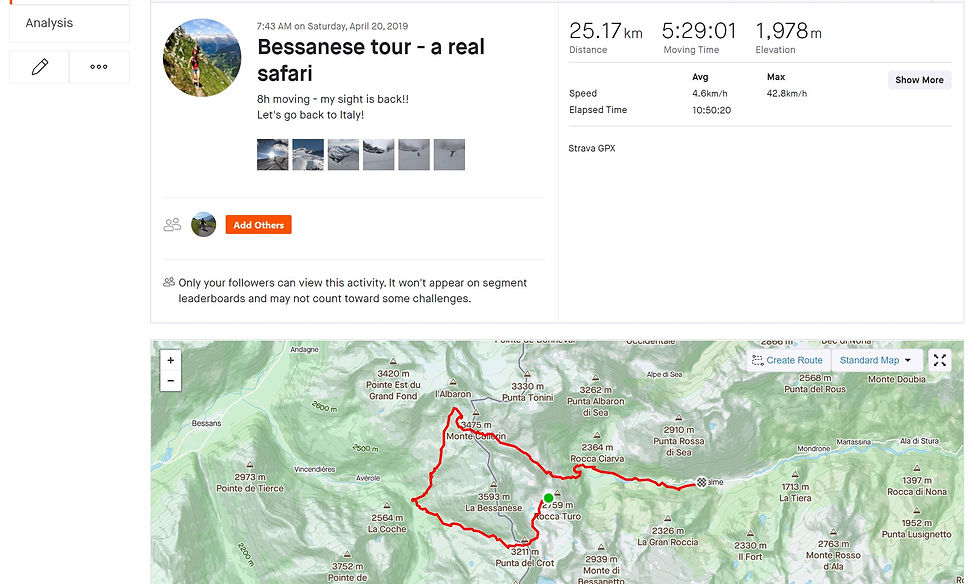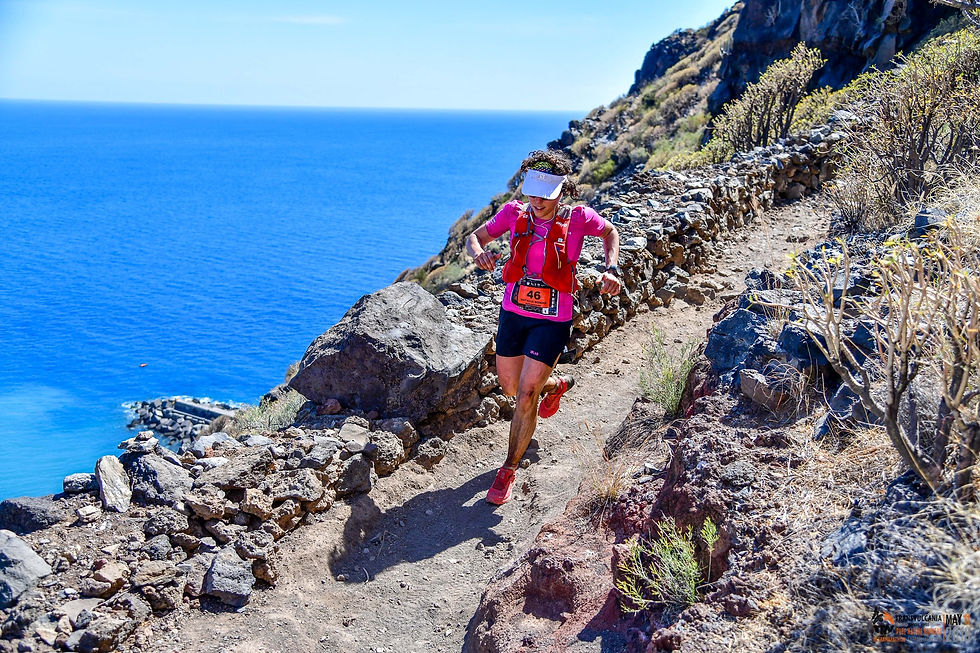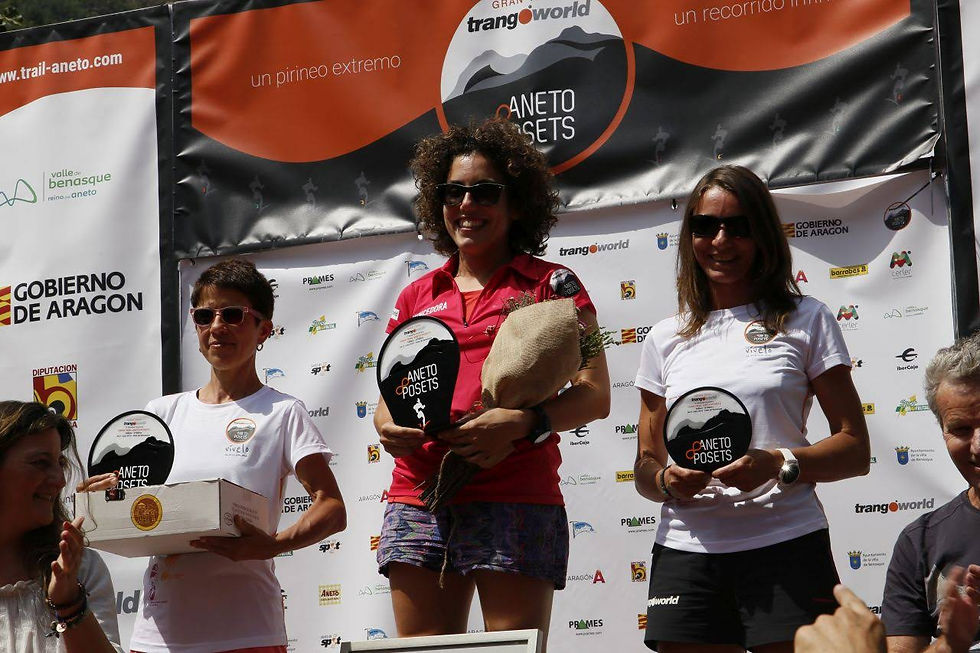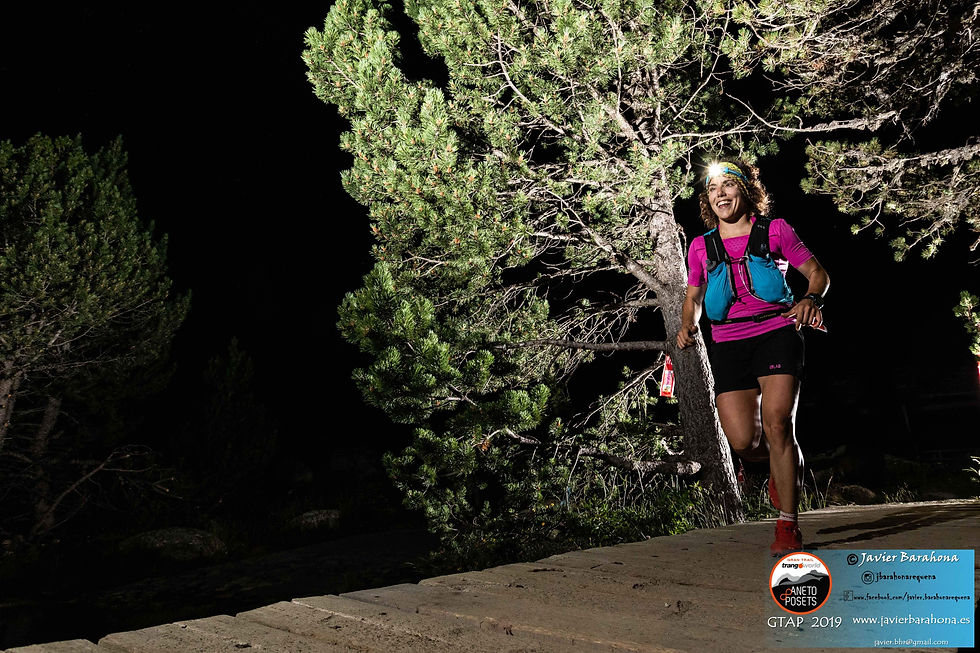A summer of adventures and sugar
- Natalia Roman Lopez

- Jan 27, 2021
- 3 min read
The days or weeks prior to a type 1 diabetes diagnosis look very much alike for most people: extreme thirst, blurry vision, urgent & frequent urination, rapid weight loss… So alike that doctors can immediately diagnose (almost) without even testing the blood glucose. I was no different. For better or for worse, I was on a backcountry skiing holiday the last 10 days of march 2019. For the better because the 7 to 10 hours of daily exercise definitely ‘off-loaded’ some glucose from my bloodstream. For the worse because we moved in pretty remote and dangerous terrain while being half blind, eating snow and peeing at every corner. March 2019 was my biggest training month EVER.
Moving on. This write up is not about the days before my type 1 diabetes diagnosis. It is about the days AFTER. More specifically about how I incorporated mountain endurance sports back in my lifestyle as well as how the 2019 mountain racing season looked like. I must warm you: most of the memories are flashes, instances of a more or less self-interpreted reality.
Off you go. After a 30 minutes ‘welcome to type 1 diabetes’ masterclass and a shot of insulin, I was sent home the same evening of my diagnosis – a pretty reckless protocol considering my blood glucose was above what a glucometer can measure. The next day I met the endocrinologist, who encouraged me to go back to sports. Even better news, I could exercise and EAT just as before.
*MEMORY* I vividly remember feeling my quads ‘re-growing’ (I had lost 10kg of muscle) during my first run after starting on insulin.
I probably re-gained the lost muscle mass in about a week. My approach to living with type 1 diabetes consisted on blindly adhering to the guidelines. The problem: I was at the mercy of the guidelines themselves but also relying on my diabetes team to pass on the information. Easter was approaching and my friends had planned a ski traverse between France and Italy. Endo gave her ok. But she forgot to mention I should reduce – at least by half – the basal insulin when exercising for 4h or more. We moved non-stop for 10h 3 days in a row.

*MEMORY* Under a horrible weather I was completely lacking the feeling of gravity. Is it the whiteout or is it the hypoglycemia? I remember going from hut to hut drinking hot chocolate and eating the sugariest cake they had to offer.
The spring came and with it the opening of the mountain racing season and a sensor to continually measure my blood glucose. Doubtful about how to handle the potential highs and lows of long runs, my endo and I agreed to run a test in my home mountains on May 1st. I passed it with flying colors – what a carrousel!

My first race, Transvulcania, is a 75k route from a lighthouse in the southern end of La Palma island, climbing up to the volcanoes, followed by a 2500m downhill to sea level. This was my fourth participation in the race, although it felt like a completely new challenge. I was determined to make a celebration of each single kilometre. One completed km? one celebration. Seventy-five completed km)? Seventy-five celebrations!

*MEMORY* Standing at the lighthouse at 5am waiting for the start, I checked my blood glucose and it was… 27 mmol/L (500 mg/dL). I had obviously ingested my usual race breakfast, that is, rice with honey. The shocking memory is that, one hour into the race, I was victim of a hypoglycemia!!
Luckily my body has learnt to switch from glucose to fat burning over the year of endurance sports. I did keep eating the occasional gel, candy or fruit at the aid stations. However, once the fat-burning switch was on, hypoglycemia stopped being a concern. I finished the race. Seventy-five celebrations, can you imagine? The rest of the racing season followed a similar pattern. Interestingly, I had no DNFs or significant stomach problems – as it was the case in the past. I also won my 100k home race in the Pyreenes :-)

*MEMORY* Fifteen minutes before the midnight start of Lavaredo Ultra Trail (120k, +6000m) the alarms of my sensor went off. I was at 3.9 after clearly overdosing my dinner bolus insulin. The feeling of panic was overwhelming. The last thing I fancied doing was eating sweets, but I had to.
The key takeaway of a summer filled with adventures and sugar can be summarized in a word: UNPREDICTABILITY. I was never in control. Diabetes ruled, I followed. Yes, I was racing at the same level as before without major issues - on paper. In reality, there were more shadows and lights.
















How do you manage type 1 diabetes with low carb? Do you keep protein low? Do you eat 80% fat? Are you fat adapted?
Thank you for your incredible, moving account of T1D, distance running, and your switch to low carb, Natalia. I'm so happy to see you thriving and speaking boldly about your past challenges and current successes! -Lisa, T1D, diaVerge.com